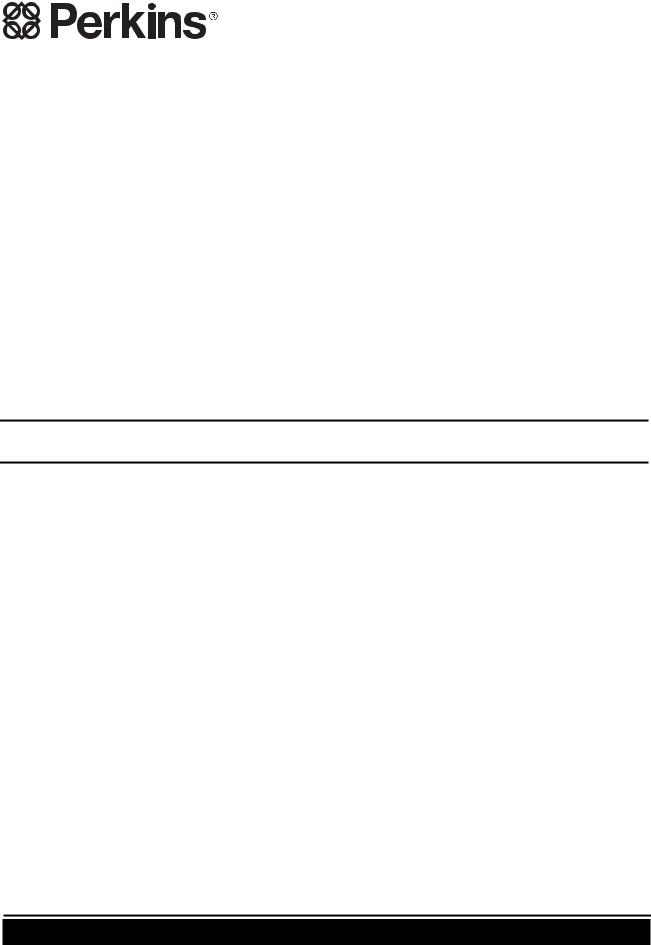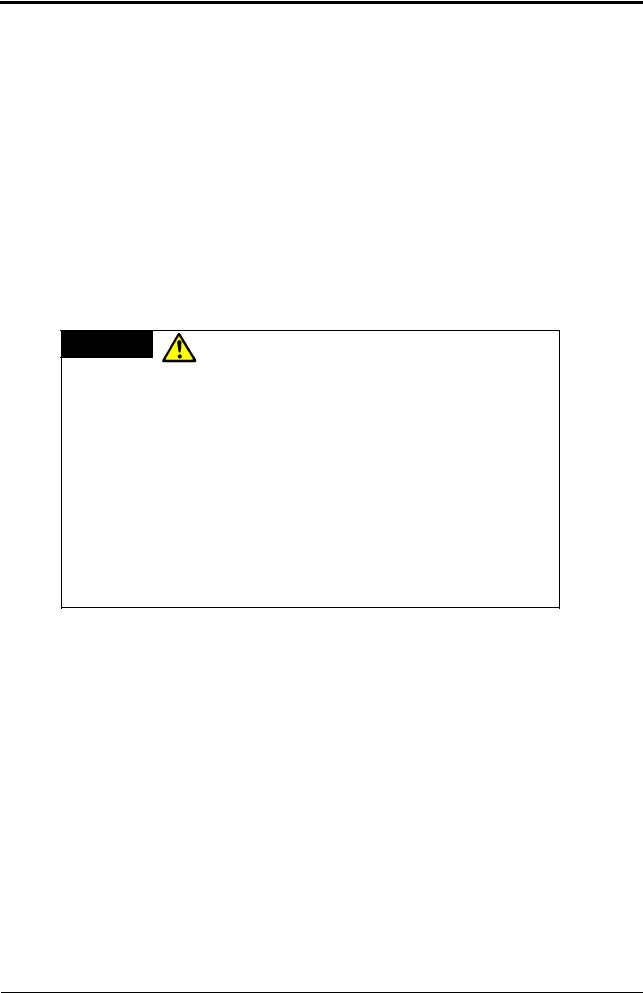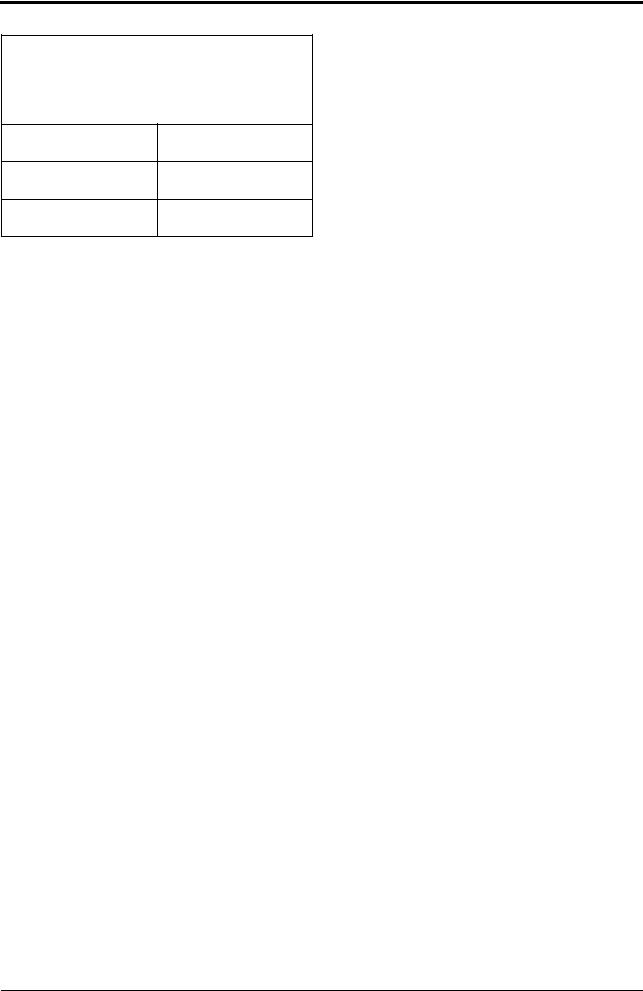Perkins Engine 4012, Perkins 4012, 4016 Gas, 4016 Service Manual

TSL4187E, Issue 1
February 1998
User’s
Handbook
Perkins 4012 and 4016 Gas
4012TESI
4016TESI

WARNING
READ AND UNDERSTAND ALL SAFETY PRECAUTIONS AND
WARNINGS MENTIONED IN THIS MANUAL.
IMPROPER OPERATION OR MAINTENANCE PROCEDURES COULD RESULT IN A SERIOUS ACCIDENT OR DAMAGE TO THE EQUIPMENT CAUSING INJURY OR DEATH.
NON-COMPLIANCE WITH THESE INSTRUCTIONS AND THOSE INCLUDED IN THE INSTALLATION MANUAL TSL4200 MAY INVALIDATE THE WARRANTY OFFERED WITH THE ENGINE.
MAKE QUITE CERTAIN THAT THE ENGINE CANNOT BE STARTED IN ANY WAY BEFORE UNDERTAKING ANY MAINTENANCE, PARTICULARLY IN THE CASE OF AUTOMATICALLY STARTING GENERATING SETS.
4012/16 Gas, February 1998

INTRODUCTION
The purpose of this Manual is to enable the operator to carry out routine servicing of the engine.
Before undertaking any work on the engine the appropriate section in the Workshop Manual should be read fully and completely understood prior to starting work.
The information contained within the manual is based on such information as was available at the time of going to print. In line with Perkins Engines (Stafford) Limited policy of continual development and improvement that information may change at any time without notice. The engine user should therefore ensure that he has the latest information before starting work.
The instructions contained in this Manual will, provided that they are correctly carried out, ensure the safe operation of the equipment.
Users are respectfully advised that it is their responsibility to employ competent persons to operate, maintain and service the equipment in the interest of safety.
Certain overhaul operations are impracticable without the use of special tools, and those operators who are not equipped to undertake major repairs are urged to consult their Perkins distributor.
When not working on the engine, ensure that all covers, blank flanges, doors, etc., are refitted to openings to prevent the ingress of dirt, etc.
Please quote the engine type and serial number with all your enquiries. This will help us to help you. The type and serial number are on a plate fitted to the crankcase.
If any doubt exists regarding the installation, use or application of the engine, the Installation Manual should be consulted for further advice contact Applications Department at Perkins Engines (Stafford) Ltd.
Oil change intervals may be changed according to operating experience by agreement with Perkins Engines (Stafford) Limited and subject to oil analysis being carried out at regular intervals.
Please note that this 4000 Series manual also covers SE engines dispatched from the factory from 1 March 1996. A table of equivalent engine designations is given on page 2.
PERKINS COMPANIES |
|
|
Perkins Group of Companies |
Perkins International - North America |
Moteurs Perkins SA |
Perkins Engines (Peterborough) Ltd. |
12025 Tech Center Drive, |
Parc de Reflets - Paris Nord II, |
Frank Perkins Way, Eastfield, |
Livonia, Michigan 48150, |
165 Avenue du Bois de la Pie, BP 40064, |
Peterborough, PE1 5NA, England. |
U.S.A. |
95913 Roissy CDG Cedex, France |
Tel: (01733) 583000 |
Tel: 313 266 5427 |
Tel: 00 33 149 90 71 72 |
Telex: 32501 PERKEN G |
Fax: 313 266 2700 |
Fax: 00 33 149 90 71 90 |
Fax: (01733) 582240 |
|
|
|
Perkins Engines Latin America Inc |
Perkins International Ltd. |
Perkins Engines (Shrewsbury) Ltd. |
999 Ponce de Leon Boulevard, |
Varity Asia/Pacific |
Lancaster Road, Shrewsbury, |
Suite 710, Coral Gables, |
Suite 3301, Convention Plaza, |
SY1 3NX, England. |
Florida 33134, U.S.A. |
1 Harbour Road, Wanchai, |
Tel: (01743) 212000 |
Tel: (305) 442 7413 |
Hong Kong. |
Telex: 35171/2 PESL G |
Telex: 32501 PERKEN G |
Tel: 852 2588 1883 |
Fax: (01743) 212700 |
Fax: (305) 442 7419 |
Fax: 852 2827 2311 |
Perkins Engines (Stafford) Ltd. |
Perkins Engines Australia Pty Ltd |
Perkins Engines (Far East) Pte Ltd. |
Tixall Road, Stafford, ST16 3UB, England. |
Suite 2, 364 Main Street, Mornington |
39 Tuas Avenue 13, |
Tel: (01785) 223141 |
3931, Victoria, Australia. |
Singapore 638999. |
Telex: 36156 PERKEN G |
Tel: (059) 75 1877 |
Tel: (65) 861 1318 |
Fax: (01785) 215110 |
Telex: 30816 |
Fax: (65) 861 6252 |
|
Fax: (059) 75 1305 |
|
Perkins Powerpart Distribution Centre |
|
|
Frank Perkins Way, |
Motori Perkins SpA |
|
Northbank Industrial Park, Irlam, |
Via Socrate. 8,22070 Casnate |
|
Manchester, M44 5PP, England. |
Con Bernate (Como), Italy. |
|
Tel: (0161) 776 5000 |
Tel: 031 56 46 25 / 031 56 46 33 |
|
Specifications Help Desk |
Telex: 380658 PERKIT I |
|
Tel: (0161) 776 5151 |
Fax: 031 24 90 92 / 031 56 41 45 |
|
Fax: (0161) 776 5200 |
|
|
Specifications Help Desk |
Perkins Motoren GmbH |
|
Tel: (0161) 776 5100 |
D-63801 Kleinostheim, |
|
Telex: 32501 PERKEN G |
Saalackerstrasse 4, Germany. |
|
|
Tel: |
(49) (6027) 5010 |
|
Fax: |
(49) (6027) 501130 |
In addition to the above companies, there are Perkins distributors in most countries. Perkins Engines (Peterborough) Limited or one of the above companies can provide distributor handbooks Publication No. 1407/4/97.
Publication TSL4187
Published by the Technical Publications Department, Stafford. © 1998 Perkins Engines (Stafford) Limited.
4012/16 Gas, February 1998 |
1 |

INTRODUCTION
PERKINS ENGINES (STAFFORD)
ENGINE DESIGNATIONS
4000 SERIES AND SE SERIES
EQUIVALENT TERMS
4000 SERIES |
SE SERIES |
4012TESI 12SETCWG
4016TESI 16SETCWG
2 |
4012/16 Gas, February 1998 |

|
CONTENTS |
||
|
|
|
|
|
|
Page |
|
INTRODUCTION |
|
|
1 |
ENGINE DESIGNATIONS |
|
|
2 |
BRIEF DESCRIPTION OF THE 4012/16 GAS ENGINES |
|
|
4 |
PHOTOGRAPHS |
INSERTS |
||
GENERAL INFORMATION |
|
|
5 |
GAS ENGINE DATA |
|
7 |
- 10 |
TORQUE SETTINGS |
|
11 |
- 13 |
LUBRICATING OIL |
|
14 |
- 16 |
COOLANT CORROSION INHIBITORS, ANTI-FREEZE |
|
|
17 |
GAS SPECIFICATION |
|
18 |
- 19 |
OPERATING INSTRUCTIONS |
|
20 |
- 21 |
PREPARATION FOR INITIAL START |
|
|
20 |
PRIMING THE TURBOCHARGER |
|
|
20 |
BATTERIES |
|
|
21 |
FILLING THE COOLING SYSTEM |
|
|
21 |
INSTRUMENT PANEL (ENGINE MOUNTED) |
|
22 |
- 24 |
EXHAUST TEMPERATURE GAUGE (OPTIONAL) |
|
|
24 |
FINAL CHECKS AND INITIAL START UP |
|
25 |
- 26 |
GAS ENGINE START/STOP SEQUENCE (AUTOMATIC) |
|
|
27 |
MAINTENANCE PROCEDURES |
|
28 |
- 41 |
OVERHAUL PERIODS & CONTINUOUS DUTY CHECKLIST |
|
42 |
- 44 |
FAULT TRACING CHART |
|
|
45 |
WIRING DIAGRAMS |
|
|
|
4012/16TESI (MINNOX) WITH CAV STARTER AND PROTECTION SWITCHES |
46 |
||
4012/16 (GAS) MINNOX ENGINE STARTING CIRCUIT WITH BUTEC |
|
|
|
STARTERS AND OPTIONAL INSTRUMENT PANEL |
|
|
47 |
EARLY 4012 SERIES GAS IGNITION AND HEINZMANN WIRING SYSTEM |
|
48 |
|
CURRENT 4012 SERIES GAS IGNITION AND HEINZMANN WIRING SYSTEM |
49 |
||
4012/16 (GAS) MINNOX ENGINE WIRING DIAGRAM OF STANDARD |
|
|
|
PROTECTION PACK AND OPTIONAL BRITISH GAS COUNCIL |
|
|
|
PROTECTION EQUIPMENT |
|
|
50 |
EARLY 4016 SERIES GAS IGNITION AND HEINZMANN WIRING SYSTEM |
|
51 |
|
CURRENT 4016 SERIES GAS IGNITION AND HEINZMAN WIRING SYSTEM |
52 |
||
4012/16 LUBRICATING OIL FLOW DIAGRAM |
|
TP315 |
|
4012/16TESI FRESH AND RAW WATER CIRCULATION DIAGRAM |
|
TP381 |
|
(HEAT EXCHANGER COOLED) |
|
|
|
4012TESI FRESH AND RAW WATER CIRCULATION DIAGRAM |
|
TP384 |
|
(RADIATOR COOLED) |
|
|
|
4012/16TESI ENGINE IGNITION AND GAS FLOW DIAGRAM |
|
TP351 |
|
4012/16 Gas, February 1998 |
3 |

BRIEF DESCRIPTION OF THE 4012/16 GAS ENGINES
4012TESI |
12 cylinder, ‘V’ form, 4 stroke, gas engine, water cooled, |
(MINNOX) |
turbo-charged, water cooled charge air cooler with separate water |
|
pump and cooling circuit, lean burn, low NOx emission levels, 9.5:1 |
|
compression ratio |
4012TESI |
12 cylinder, ‘V’ form, 4 stroke, gas engine, water cooled, |
(MINNOX) 200 L.C. |
turbo-charged, water cooled charge air cooler with separate water |
|
pump and cooling circuit, lean burn, with NOx emission of less than |
|
200 g/GJ, 9.5:1 compression ratio. |
4012TESI |
12 cylinder, ‘V’ form, 4 stroke, gas engine, water cooled, |
(MINNOX) 140 L.C. |
turbo-charged, water cooled charge air cooler with separate water |
|
pump and cooling circuit, lean burn, with NOx emission of less than |
|
140 g/GJ, 9.5:1 compression ratio. |
4012TESI |
12 cylinder, ‘V’ form, 4 stroke, gas engine, water cooled, |
(MINNOX) 140 H.C. |
turbo-charged, water cooled charge air cooler with separate water |
|
pump and cooling circuit, lean burn, with NOx emission of less than |
|
140 g/GJ, 11.5:1 compression ratio. |
4016TESI |
16 cylinder, ‘V’ form, 4 stroke, gas engine, water cooled, |
(MINNOX) 200 L.C. |
turbo-charged, water cooled charge air cooler with separate water |
|
pump and cooling circuit, lean burn, with NOx emission level of 200 |
|
g/GJ or less, 9.5:1 compression ratio. |
4016TESI |
16 cylinder, ‘V’ form, 4 stroke, gas engine, water cooled, |
(MINNOX) 140 L.C. |
turbo-charged, water cooled charge air cooler with separate water |
|
pump and cooling circuit, lean burn, with NOx emission of 140 g/ |
|
GJ or less, 9.5:1 compression ratio. |
4016TESI |
16 cylinder, ‘V’ form, 4 stroke, gas engine, water cooled, |
(MINNOX) 140 H.C. |
turbo-charged, water cooled charge air cooler with separate water |
|
pump and cooling circuit, lean burn, with NOx emission of 140 g/ |
|
GJ or less, 11.5:1 compression ratio. |
4016TESI |
16 cylinder, ‘V’ form, 4 stroke, gas engine, water cooled, |
(MINNOX) 90 H.C. |
turbo-charged, water cooled charge air cooler with separate water |
|
pump and cooling circuit, lean burn, with NOx emission of 90 g/GJ |
|
or less, 11.5:1 compression ratio. |
4 |
4012/16 Gas, February 1998 |
4012TESI (MINNOX)
4012TESI (MINNOX)
4016TESI (MINNOX)
4016TESI (MINNOX)

GENERAL INFORMATION
SAFETY
Engine lift equipment
Use only the lift equipment which is designed for the engine.
Use lift equipment or obtain assistance to lift heavy engine components such as the cylinder block, cylinder head, flywheel housing, crankshaft and flywheel.
Check the engine lift brackets for security before the engine is lifted.
Asbestos joints
Some joints and gaskets contain compressed asbestos fibres see Warning label Fig. 1 in a rubber compound or in a metal outer cover. The 'white' asbestos (Chrysotile) which is used is a safer type of asbestos and the danger of damage to health is extremely small.
Contact with asbestos particles normally occurs at joint edges or where a joint is damaged during removal, or where a joint is removed by an abrasive method.
To ensure that the risk is kept to a minimum, the procedures given below must be followed when an engine which has asbestos joints is dismantled or assembled.
●Work in an area with good ventilation.
●Do NOT smoke.
●Use a hand scraper to remove the joints
- do NOT use a rotary wire brush.
●Ensure that the joint to be removed is wet with oil or water to contain any loose particles.
●Spray all asbestos debris with water and place it in a closed container which can be sealed for safe disposal.
Dangers from used engine oils
Prolonged and repeated contact with mineral oil will result in the removal of natural oils from the skin, leading to dryness, irritation and dermatitis. The oil also contains potentially harmful contaminants which may result in skin cancer.
Adequate means of skin protection and washing facilities should be readily available.
Fig. 1
The following is a list of 'Health Protection Precautions', suggested to minimise the risk of contamination.
1.Avoid prolonged and repeated contact with used engine oils.
2.Wear protective clothing, including impervious gloves where applicable.
3.Do not put oily rags into pockets.
4.Avoid contaminating clothes, particularly underwear, with oil.
5.Overalls must be cleaned regularly.
Discard unwashable clothing and oil impregnated footwear.
6.First aid treatment should be obtained immediately for open cuts and wounds.
7.Apply barrier creams before each period of work to aid the removal of mineral oil from the skin.
8.Wash with soap and hot water, or alternatively use a skin cleanser and a nail brush, to ensure that all oil is removed from the skin. Preparations containing lanolin will help replace the natural skin oils which have been removed.
9.Do NOT use petrol, kerosene, diesel fuel, gas oil, thinners or solvents for washing the skin.
10.If skin disorder appears, medical advice must be taken.
11.Degrease components before handling if practicable.
12.Where there is the possibility of a risk to the eyes, goggles or a face shield should be worn. An eye wash facility should be readily available.
4012/16 Gas, February 1998 |
5 |

GENERAL INFORMATION
Environmental protection |
Practical Information |
|
There is legislation to protect the |
To clean components |
|
environment from the incorrect disposal of |
It is important that the work area is kept clean |
|
used lubricating oil. To ensure that the |
and that the components are protected from |
|
environment is protected, consult your Local |
dirt and debris. Ensure that dirt does not |
|
Authority who can give advice. |
contaminate the fuel system. |
|
|
Before a component is removed from the |
|
Viton seals |
engine, clean around the component and |
|
Some seals used in engines and in |
ensure that all openings, disconnected |
|
components fitted to engines are made from |
hoses and pipes are sealed. |
|
Viton. |
Remove, clean and inspect each component |
|
carefully. If it is usable, put it in a clean dry |
||
Viton is used by many manufacturers and is |
||
a safe material under normal conditions of |
place until needed. Ball and roller bearings |
|
must be cleaned thoroughly and inspected. If |
||
operation. |
the bearings are usable, they must be |
|
If Viton is burned, a product of this burnt |
||
flushed in low viscosity oil and protected with |
||
material is an acid which is extremely |
clean paper until needed. |
|
dangerous. Never allow this burnt material |
Before the components are assembled, |
|
to come into contact with the skin or with the |
ensure that the area is free from dust and dirt |
|
eyes. |
as possible. Inspect each component |
|
If it is necessary to come into contact with |
||
immediately before it is fitted, wash all pipes |
||
components which have been burnt, ensure |
and ports and pass dry compressed air |
|
that the precautions which follow are used: |
through them before connections are made. |
●Ensure that the components have Use suitable gloves for protection when
cooled.
●Use Neoprene gloves and discard the gloves safely after use.
●Wash the area with a calcium hydroxide solution and then with clean water.
●Disposal of gloves and components which are contaminated, must be in accordance with local regulations.
If there is contamination of the skin or eyes, wash the affected area with a continuous supply of clean water or with a calcium hydroxide solution for 15-60 minutes. Obtain immediate medical attention.
components are degreased or cleaned with trichloroethylene, white spirit, etc.
Degreasing solutions which are basically trichloroethane are not recommended.
6 |
4012/16 Gas, February 1998 |

GAS ENGINE DATA
The figures quoted are based on engines set to meet the ISO 3046/1 1981 Condition. For full technical data please refer to the Product Information Manual.
Type (Gas) 12 cylinder and 16 cylinder (MINNOX) 'V' form, water cooled, turbocharged, wet exhaust manifolds with separate raw water cooled charge air cooler.
RANGE |
4012TESI (MINNOX) |
|
4016TESI (MINNOX) |
|
|
|
|
Cycle |
|
4 stroke |
|
|
|
|
|
Configuration |
|
‘V’ form |
|
|
|
|
|
Bore |
|
160 mm |
|
|
|
|
|
Stroke |
|
190 mm |
|
|
|
|
|
Total swept volume |
45.842 litres |
|
61.123 litres |
|
|
|
|
Compression ratio |
|
9.5:1 or 11.5:1 |
|
|
|
||
Rotation |
Anti-clockwise looking on flywheel end |
||
|
|
|
|
Firing order |
1A,6B,5A,2B,3A,4B |
|
1A,1B,3A,3B,7A,7B,5A,5B |
6A,1B,2A,5B,4A,3B |
|
8A,8B,6A,6B,2A,2B,4A,4B |
|
|
|
||
|
|
|
|
Cylinder numbering |
Cylinder 1 furthest from flywheel |
||
|
|
|
|
Cylinders designated A are on the left side of the engine when viewed from opposite end to the flywheel, with cylinders designated B on the right hand side of the engine.
NOTE: This is NOT the same as the British Standard and ISO designation.
Valve clearances |
|
Exhaust 0.4 mm (0.016”) |
|
|
|
|
|
|
|
Valve dia (mm) inlet & exhaust |
|
48 |
|
|
|
|
|||
Valve timing |
See Workshop Manual Section U7 |
|||
|
|
|
|
|
Valve setting |
|
See page 39 onwards |
|
|
|
|
|
||
Ignition timing |
|
See engine number plate |
||
|
|
|
||
Piston speeds |
Engine r/min |
|
m/s (ft/min) |
|
|
1000 |
|
|
6.33 (1247) |
|
1200 |
|
|
7.60 (1496) |
|
1500 |
|
|
9.50 (1870) |
|
|
|
|
|
TYPICAL COOLING SYSTEM
Approved coolants |
See page 17 |
|
||
|
|
|
|
|
Total capacity engine including |
|
|
|
|
charge air cooler & wet exhaust |
81 litres (17.8 gals) |
|
110 litres (24.3 gals) |
|
manifolds |
|
|
|
|
|
|
|
|
|
Total capacity engine and radiator |
239 litres (52.6 gals) |
|
278 litres (61.3 gals) |
|
|
|
|
|
|
Total capacity engine and heat |
153 litres (33.7 gals) |
|
183 litres (40.3 gals) |
|
exchanger |
|
|||
|
|
|
||
|
|
|
|
|
Engine shut down temperature |
96°C |
|
||
|
|
|||
Max. temperature into engine |
To be determined from heat dissipated and water flow through each |
|||
particular engine model |
||||
|
||||
|
|
|||
Thermostat opening temperature |
71°C (nat. gas) 85°C (landfill or biogas) 92°C (HC engines) |
|||
|
|
|
||
System pressure |
0.5 - 0.7 bar |
|
||
|
|
|
|
|
Maximum pressure at jacket |
2.5 bar max |
|
||
coolant pump outlet |
|
|||
|
|
|
||
|
|
|
|
|
4012/16 Gas, February 1998 |
7 |

GAS ENGINE DATA
GAS SYSTEM
|
4012TESI (MINNOX) |
4016TESI (MINNOX) |
|
|
|
|
|
Approved gas |
British Natural Gas |
||
|
|
||
Lower calorific value |
34.71 MJ/nm3 |
||
Carburettor mixing unit |
Deltec 200 - 11 |
||
|
|
|
|
Carburettor throttle body |
Deltec 100 - 11 |
Deltec 140 - 11 |
|
|
|
|
|
Gas control valve |
Deltec 36 mm dia. |
Deltec 45 mm dia. |
|
|
|
|
|
|
Deltec 38 mm dia. 4016TESI (minnox 140 HE) ONLY |
||
|
|
||
Gas pressure min. |
15 m bar (1.5 kPa) |
||
|
|
||
Gas pressure max. |
50 m bar (5 kPa) |
||
|
|
||
Regulator type (Zero pressure) |
Dungs FRS 220, 5065 or 5100 |
||
|
|
||
Later engines |
or Kromschroder GI50 R02 or GI65 R02 |
||
|
|
||
|
If above 50 mbar (5kPa), an additional regulator should be used in |
||
Supply pressure |
order to bring the supply pressure to between the max. & min. |
||
|
figures given above |
||
|
|
|
|
Additional items to meet The Instituion of Gas Engineers procedures IGE/UP/3 for 4012/16 (Minnox) |
|||
|
|
|
|
Low pressure detector |
Perkins Part No. (see Spares Book) |
||
(low pressure gas supply only) |
|||
|
|||
|
|
||
Gas solenoid valves |
Not Perkins supply |
||
|
|
||
Spit back detector |
Perkins Part No. (see Spares Book) |
||
|
|
||
Manual gas shut-off valve |
Perkins Part No. (see Spares Book) (if fitted) |
||
|
|
|
|
IGNITION SYSTEM |
|
||||
Ignition unit type |
Altronic DISN 800 |
||||
|
|
|
|
||
Ignition coil type |
Altronic 501 061 (L.C. engines) Altronic 591 010 (H.C. engines) |
||||
|
|
|
|
||
Spark plug type |
CHAMPION RN79G 14mm (earlier L.C. engines) |
||||
CHAMPION RB77 WPC 18mm (later engines) |
|||||
|
|||||
|
|
|
|
||
Spark plug gap |
RN79G 0.5 mm (0.020”) |
||||
RB77WPC 0.4 mm (0.015”) |
|||||
|
|||||
|
|
|
|
|
|
|
GOVERNOR |
|
|||
Make |
Heinzmann Electronic |
||||
|
|
|
|
||
Type |
2 x E6V |
|
2 x E10 |
||
|
|
|
|
|
|
LUBRICATION SYSTEM |
|
||||
Recommended oil |
See pages 14 - 16 |
||||
|
|
||||
Type of system |
Wet sump, external mounted oil pump |
||||
|
|
|
|||
Total oil capacity (oil cooler and filter) |
178 litres (39 gals) |
|
|
238 litres (51 gals) |
|
|
|
|
|
||
Sump capacity (dipstick) min. |
136 litres (30 gals) |
|
|
147 litres (32 gals) |
|
|
|
|
|
||
Sump capacity (dipstick) max. |
159 litres (35 gals) |
|
|
214 litres (47 gals) |
|
|
|
|
|||
Min. oil pressure (rated speed) to bearings |
340 kPa (49 lb/in2) |
||||
Crankcase pressure max |
25 mm water gauge |
||||
|
|
|
|||
Max. oil temperature in sump |
105°C |
|
|||
|
|
||||
Lubricating oil filter |
disposable canister type |
||||
|
|
|
|||
Crankcase breather |
Closed circuit |
|
|||
|
|
|
|
|
|
8 |
4012/16 Gas, February 1998 |

|
|
|
|
|
|
GAS ENGINE DATA |
INDUCTION SYSTEM |
|
|||||
|
|
|
|
|
|
|
|
|
4012TESI (MINNOX) |
|
|
4016TESI (MINNOX) |
|
|
|
|
|
|
|
|
Air cleaner |
|
|
Twin |
|
||
|
|
|
|
|
|
|
Type (paper element) |
|
|
S551A |
|
||
|
|
|
|
|
||
Max. air intake depression |
|
|
543 mm H2O (40 mm Hg) (L.C. engines) |
|||
|
|
|
406 mm H2O (30 mm Hg) (H.C. engines) |
|||
Air restriction Indicator setting |
|
|
380 mm H2O |
|||
Turbocharger |
|
|
Twin Garrett (4016TESI 140 H.C. only) |
|||
|
|
Twin Schwitzer (all other engines) |
||||
|
|
|
||||
|
|
|
|
|
|
|
EXHAUST SYSTEM |
|
|||||
|
|
|
|
|
||
Manifold type |
|
|
WET |
|
||
|
|
|
|
|
||
Exhaust outlet flange |
|
|
Vertical (twin) |
|||
|
|
|
|
|
||
Mating flange |
|
|
2 x 6” Table D |
|||
|
|
|
|
|
|
|
Max. exhaust back pressure |
|
|
40 mm Hg |
|
||
|
|
|
|
|
|
|
Max. exhaust temperature (°C) |
|
|
See Product Information Manual |
|||
(after turbocharger) |
|
|
||||
|
|
|
|
|
|
|
|
|
|
|
|
|
|
|
|
FLYWHEEL |
|
|||
|
|
|
|
|
||
SAE Size |
|
|
18” |
|
||
|
|
|
|
|
|
|
No. of teeth on ring gear |
|
156 |
|
|
||
|
|
|
|
|
||
FLYWHEEL HOUSING |
|
|||||
|
|
|
|
|
||
SAE Size |
|
|
‘00’ |
|
||
|
|
|
|
|
|
|
|
|
CRANKSHAFT |
|
|||
|
|
|
|
|
|
|
Maximum overhung weight on rear |
|
|
1700 Kg |
|
||
bearing |
|
|
|
|||
|
|
|
|
|
|
|
|
|
|
|
|
|
|
T.V. damper |
|
|
1 x 18” |
|
|
2 x 20” |
|
|
|
|
|
||
NOTE: Subject to torsional vibration investigation different T.V. dampers may be fitted. |
||||||
|
|
|
|
|
|
|
|
|
DRY WEIGHT |
|
|||
|
|
|
|
|
||
Dry weight |
|
|
4380 kg |
|
|
5520 kg |
|
|
|
|
|
|
|
Wet weight |
|
|
4680 kg |
|
|
5820 kg |
|
|
|
|
|
|
|
HOLDING DOWN BOLT HOLES |
|
|||||
Bolt size (engine feet) |
|
|
22 mm |
|
||
|
|
|
|
|
|
|
No. off |
|
8 |
|
|
||
|
|
|
|
|
||
ELECTRICAL SYSTEM |
|
|||||
Voltage |
|
24 |
|
|||
|
|
|
||||
Alternator type |
|
Prestolite LNA4024/5 with internal regulator |
||||
|
|
|
||||
Alternator output (amps) |
|
30 at a stabilised output of 28 volts |
||||
|
|
|
|
|||
Starter motor type (Twin) Prestolite/Butec |
|
MS1/108 |
|
MS7/5 |
||
|
|
|
|
|
||
No. of teeth (gear ring) |
|
156 |
|
|||
|
|
|
|
|||
No. of teeth (starter motor) |
|
12 |
|
|||
|
|
|
|
|
|
|
Battery capacity cold cranking amps |
|
286 (each battery) |
|
286 (each battery) |
||
to IEC Standard at 0°C (32°F) |
|
|
||||
|
|
|
|
|
||
|
|
|
|
|||
Battery (lead acid) |
|
24 V (2 x 12 V) at 0°C (32°F) (286 Ah) |
||||
|
|
|
|
|
|
|
4012/16 Gas, February 1998 |
9 |

GAS ENGINE DATA
PROTECTION EQUIPMENT
Before resetting protection equipment, it must be established whether special settings (for that individual engine) have been specified in the engine sales contract. This is particularly important with ALL high water temperature settings, and ALL Cogen applications.
Standard settings for protection equipment are as follows: High air manifold pressure switch
Shutdown switches |
Alarm |
Shutdown |
|
|
|
High oil temperature |
115°C |
120°C |
|
|
|
Low oil pressure |
2.06 bar (30 lb/in²) |
1.93 bar (28 lb/in²) |
High water temperature |
|
|
|
|
|
71°C Thermostat |
91°C |
96°C |
85°C Thermostat |
96°C |
101°C |
96°C Thermostat |
100°C |
105°C |
|
|
|
Caution: The above standard settings do not supercede any settings specified in the engine sales contract.
Overspeed |
15% (on 1500 rev/min only) |
|
|
High air manifold bursting disc pressure |
75 lb/in² at 42°C or 58 lb/in² at 120°C |
(Early engines only) |
|
|
|
|
AIR STARTING |
|
Air Starter Pressure |
|
150 lb/in² (1034 kPa) |
Compressed air supply |
|
170 lb/in² (1172 kPa) |
Type |
|
Ingersoll-Rand Type SS815 |
|
|
|
INSTRUMENT PANEL (ENGINE MOUNTED) |
||
|
|
Normal operation |
|
|
|
Oil pressure |
|
Between 300 - 560 kPa (42.6 - 80 lb/in²) |
|
|
|
Oil temperature |
|
Between 80 - 90°C (176 - 194°F) |
|
|
|
Water temperature |
|
Between 65 - 85°C (149 - 185°F) |
|
|
|
Exhaust temperature |
|
See Product Information Manual |
|
|
|
Boost pressure |
|
See Test Certificate |
|
|
|
|
COOLANT JACKET HEATING |
|
|
|
|
Heater |
|
2 x 4 kw |
|
|
|
10 |
4012/16 Gas, February 1998 |

|
|
TORQUE SETTINGS |
|
|
|
|
|
|
|
WARNING |
IT IS ESSENTIAL THAT THE CORRECT LENGTH OF SCREW OR |
|
|
BOLT IS USED. INSUFFICIENT THREAD MAY RESULT IN THE |
|
|
THREAD BEING STRIPPED. WHEREAS TOO LONG A THREAD MAY RESULT IN BOTTOMING IN A BLIND HOLE, OR CATCHING ON ADJACENT COMPONENTS.
NOTE: * Bolt and threads must be lubricated with clean engine oil.
** Cylinder head bolts to be lubricated under the heads, under the washers and on the threads with P.B.C. (Poly-Butyl-Cuprysil) grease. Important: See Section R10 in the Workshop Manual before fitting. All other bolt threads only to be lubricated with clean
engine oil. Care must be taken not to oil the heads and faces. |
|
|
|
|||
TORQUE SETTINGS |
|
|
|
|
|
|
CYLINDER HEAD GROUP |
|
|
|
|
Ibf.ft |
Nm |
** Cylinder head bolt (early type) |
|
|
See Section R14 |
M24 |
550 |
750 |
|
|
|||||
** Cylinder head bolt (later (waisted) type) |
M24 |
530 |
723 |
|||
Rocker shaft bolt/nut |
|
|
|
M16 |
90 |
120 |
Rocker adjuster nut inlet/exhaust |
|
|
|
M12 |
35 |
50 |
Rocker box bolt |
|
|
|
M10 |
35 |
50 |
Air manifold bolt |
|
|
|
M10 |
35 |
50 |
Exhaust manifold bolt |
|
|
|
M10 |
50 |
70 |
Turbocharger V-band clamp nuts - |
(Schwitzer) |
|
7 |
9.5 |
||
|
(Mitsubishi) |
|
7 |
9.5 |
||
|
(Garrett) |
|
10 |
13.5 |
||
Sandwich plate retaining capscrew (if fitted) |
M10 |
40 |
57 |
|||
CRANKCASE AND CRANKSHAFT GROUPS |
|
|
|
|||
* Main bearing bolt |
|
|
|
M24 |
580 |
783 |
Side bolts (main bearing caps) |
|
|
|
M16 |
124 |
168 |
Bolts sump to crankcase |
|
|
|
M10 |
40 |
57 |
* Connecting rod bolt |
|
|
|
M16 |
210 |
285 |
Viscous damper bolts to crankshaft |
|
|
|
M16 |
250 |
340 |
Flywheel bolt to crankshaft |
|
|
|
M16 |
250 |
340 |
Front drive adaptor bolts to crankshaft |
M16 |
250 |
340 |
|||
Balance weight bolt |
|
|
|
M16 |
250 |
340 |
Front crankshaft pulley bolt |
|
|
|
M16 |
250 |
340 |
Piston cooling jet setscrew |
|
|
|
M10 |
35 |
50 |
Flywheel housing bolt |
|
|
|
M10 |
35 |
50 |
LUBRICATING OIL PUMP |
|
|
|
|
|
|
Bolts, pump housing to gearcase plate |
M10 |
35 |
50 |
|||
Thin nut gear to drive shaft |
|
|
|
M24 |
175 |
237 |
4012/16 Gas, February 1998 |
11 |

TORQUE SETTINGS
CAMSHAFT GROUP |
|
|
|
Ibf.ft |
Nm |
|
|
|
|
|
|
Camshaft gear bolt |
|
|
M12 |
110 |
150 |
Camshaft thrust plate bolt |
|
|
M10 |
35 |
50 |
Camshaft follower housing capscrew |
|
M10 |
50 |
70 |
|
Cam follower housing bolt |
|
|
M10 |
35 |
50 |
Idler gear hub bolts |
|
|
M10 |
35 |
50 |
WATER PUMP AND OIL PUMP GROUPS |
|
|
|
|
|
Water pump/oil pump gear units |
|
|
M24 |
170 |
230 |
Water header to oil cooler bolts |
|
|
M10 |
35 |
50 |
Water header to gearcase bolts |
|
|
M10 |
35 |
50 |
Raw water pump gear securing nut (non lubricated thread) |
M35 |
184 |
250 |
||
Engine Feet |
|
|
M12 |
70 |
95 |
GOVERNOR |
|
|
|
|
|
Control shaft mounting plate bolt |
|
|
M10 |
35 |
50 |
FAN DRIVE |
|
|
1/2" BSW |
|
|
Fan driven pulley taper lock bush screw |
|
35 |
50 |
||
|
|
|
5/8" BSW |
124 |
170 |
ALTERNATOR |
|
|
3/8" BSW |
|
|
Drive pulley taper lock bush screws |
|
14 |
20 |
||
IGNITION SYSTEM |
|
|
|
|
|
Spark plug |
|
|
M18 x 1.5 |
35 |
50 |
Adaptor clamp capscrew |
|
|
M12 |
100 |
136 |
Adaptor clamp screw (earlier engines) |
|
M10 |
50 |
68 |
|
Retaining bolt for timing disc cover |
|
M10 |
35 |
50 |
|
Timing disc housing to mounting plate bolt |
|
M10 |
35 |
50 |
|
Drive gear screw |
|
|
M10 |
50 |
70 |
Drive coupling capscrew |
|
|
M6 |
10 |
13.5 |
Driven gear capscrew |
|
|
M10 |
50 |
70 |
Magnet disc to shaft nut |
|
|
M12 |
35 |
50 |
Disc shaft flange to camshaft bolt |
|
|
M12 |
120 |
171 |
FLEXIBLE COUPLING (HOLSET) |
M12 or 1/2" UNC |
|
|
||
Flexible coupling cover screw |
|
90 |
129 |
||
Coupling driving flange screws |
(coupling size 2.15) |
M12 or 1/2" UNC |
90 |
129 |
|
to flywheel |
(coupling size 3.86) |
M16 or 5/8" UNC |
175 |
250 |
|
12 |
4012/16 Gas, February 1998 |

TORQUE SETTINGS
GENERAL TORQUE LOADINGS
The following torque loadings are general for metric coarse threads for grade 8.8 steel and do not supersede the figures quoted above.
Thread Size (mm) |
Ibf.ft |
Nm |
8 |
18 |
25 |
10 |
35 |
50 |
M10-12.9 steel |
50 |
70 |
These are based to BS 3692. |
|
|
4012/16 Gas, February 1998 |
13 |

LUBRICATING OIL
QUANTITY OF OIL
|
4012TESI |
4016TESI |
|
|
|
The total system capacity |
178 litres (39 gallons) |
238 litres (52 gallons) |
|
|
|
The maximum sump capacity |
159 litres (35 gallons) |
214 litres (47 gallons) |
|
|
|
The minimum dipstick mark indicates |
136 litres (30 gallons) |
147 litres (32 gallons) |
|
|
|
CAUTION
In order to select a suitable lubricating oil for a gas engine it is necessary to consider the fuel quality.
NATURAL GAS ENGINES (NO ACIDIC PRODUCTS PRESENT)
The oil should be a grade that is specifically formulated by all the major oil companies for turbocharged and charge cooled natural gas engines. The oil should contain anti-wear and detergent/dispersant additives. The oil is to have high resistance to oxidation and have good thermal stability. Modern gas engine oils do not rely on a high total base number to achieve long life and the special additive packages that are now available from many of the major oil suppliers now meet this criteria.
Engines fitted with oxidizing catalysts (2 way) require a lubricant that is low in zinc and phosphorus, it is essential that the oil supplier confirms that the brand of oil supplied is compatible with the catalyst.
BIOGAS ENGINES (CONTAINING ACIDIC PRODUCTS AT LEVELS APPROVED BY PERKINS ENGINES (STAFFORD) LTD
These engine require a lubricating oil that has more reserve alkalinity than the natural gas engine and therefore the TBN should be more than 8 and less than 10 with the sulphated ash in the range of 0.5 to 1.1%. The oil supplier will assist with the selection of suitable oils when presented with the gas analysis. (TBN = Total Base Number).
NATURAL GAS BIOGAS ENGINES
Where gas engines oils are not available, please consult Perkins Engines (Stafford) Ltd for advice.
GRADE OF OIL
The viscosity of the oil used should be either SAE 30 or SAE 40. In general SAE 30 is used at temperature less than 30°C average ambient temperature and SAE 40 more than 30°C.
As these engine are generally operating continuously, it is possible to use higher viscosity oils as sluggishness in starting is not generally critical.
The use of SAE40 will give reduced oil consumption but under certain conditions it will also give reduced oil change periods.
OIL CHANGE PERIOD (NATURAL GAS ENGINES)
For normal operation of gas engines, change the oil after the first 500 hours, after which the oil change period is 800 hours or annually which ever is the sooner.
It may be possible to extend the oil change period, where an oil change programme has been approved by Perkins Engines (Stafford) Ltd, based upon the analysis of oil samples taken during the first 1000 hours of engine use. However even if an analysis is showing a satisfactory oil quality, the oil life should not be extended above 1000 hours.
14 |
4012/16 Gas, February 1998 |
